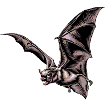Museum, University of Nebraska State

University of Nebraska State Museum: Mammalogy Papers
Document Type
Article
Date of this Version
10-30-2018
Citation
Special Publications / Texas Tech University Museum, number 68 (October 30, 2018).
Abstract
The chiropteran fauna of the island of Saint Vincent, represented by 12 species, is among the most complex in the Lesser Antilles, being represented by four families including Noctilionidae (1 species), Mormoopidae (1), Phyllostomidae (8), and Molossidae (2). This fauna includes four trophic guilds as represented by Noctilio leporinus (piscivore/insectivore); Glossophaga longirostris and Monophyllus plethodon (nectarivore/pollenivore); Artibeus lituratus, A. schwartzi, Brachyphylla cavernarum, Ardops nichollsi, and Sturnira paulsoni (frugivore); and Pteronotus fuscus, Micronycteris buriri, Molossus molossus, and Tadarida brasiliensis (insectivore). One species—Micronycteris buriri—and two subspecies—Sturnira paulsoni paulsoni and Ardops nichollsi vincentensis—are endemic to the island. Recent advancements in population genomics have led to the discovery of the reticulated evolutionary history of Artibeus schwartzi and it is likely that the formation of the hybrid evolutionary trajectory of this species is linked with classical island biogeography. The bat fauna of St. Vincent is unique in the West Indies, characterized by being a crossroads for species, an outpost for both northern and southern species, the boundary for a multi-island bat fauna as marked by Koopman’s Line, and a site of endemism. Based on our studies, we place the bat fauna of St. Vincent as the southern-most island in the Lesser Antillean Faunal Core.


Comments
Copyright 2018, the authors. Used by permission.